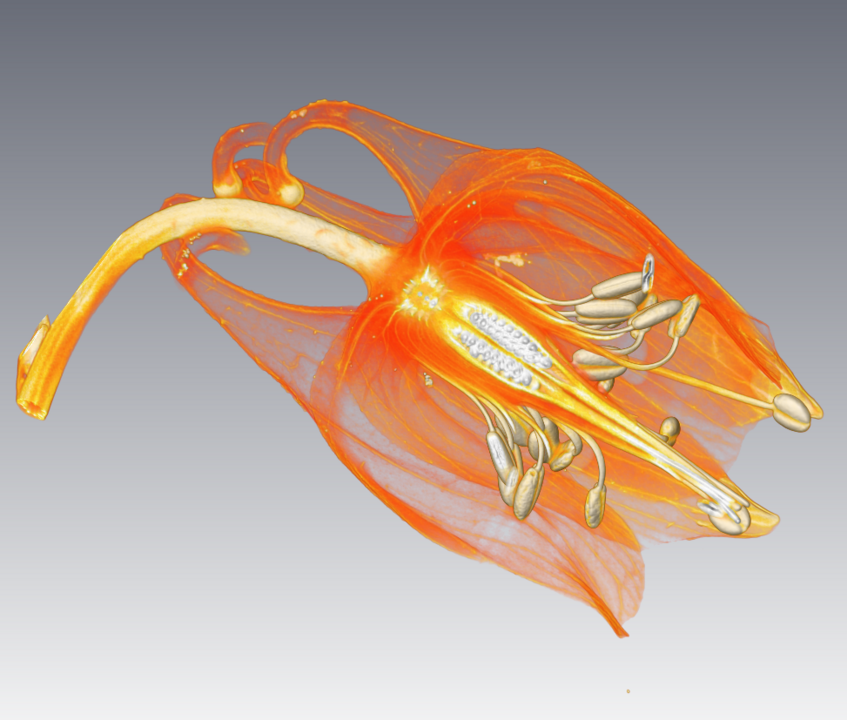Floral development and 3D-pollination syndromes in Aquilegia
- FWF-Project P 31101-B29
- 6/2018–
- Project leader: Dipl.-Ing. Dr. Marion Chartier
- Employees: Constantin Kopper, BSc MSc
The extraordinary diversity of angiosperms and their flowers it the results of the intricate co-evolutionary relationship with their pollinators. Many angiosperm groups are pollinated by a broad range of animals and have evolved strikingly different looking flowers. One such group is the genus Aquilegia (Columbines, Buttercup Family), species of which are pollinated either by bees (and bumblebees), hummingbirds or hawkmoths. Based on earlier studies, we know that bee pollination is most likely ancestral in this genus and that, in North America, speciation was driven by repeated shifts to hummingbird and, subsequently, to hawkmoth pollination. One possible way by which morphological differences between derived species and their ancestors may occur, is through differential ontogenetic patterns: relative to the ancestral species, development may be stopped prematurely (or prolonged), leading to a juvenilized (or hyperadult) morphology. The evolution of species through such changes in development is called heterochrony. Heterochrony has been recognized as an important process in animal evolution, but has rarely been studied in plants.
The aim of this project is to investigate whether the differences among North American columbine flowers can be explained with heterochrony. We hypothesize that some aspects of floral morphology such as, for instance, nectar spur length and curvature, are the result of heterochrony. In addition, we will test whether the repeated and independent evolution of similar flower morphologies in the group are paralleled by similar developmental patterns; in other words, whether morphological convergence of the adult floral form is linked to convergent patterns of floral development. Finally, we will perform fieldwork to investigate pollination biology (for species, for which pollinators have not been observed yet), chemical ecology, and pollinator driven selection on the 3D shape of the flower for the different North American species.
This project is conducted in collaboration with Prof. S. Hodges (University of Santa Barbara, USA), Prof. E. Kramer (University of Harvard, USA), Prof. Dötterl and Prof. R. Tenhaken (University of Salzburg, Austria).

Aquilegia laramiensis, young flower close to anthesis observed by micro computer tomography © Marion Chartier
